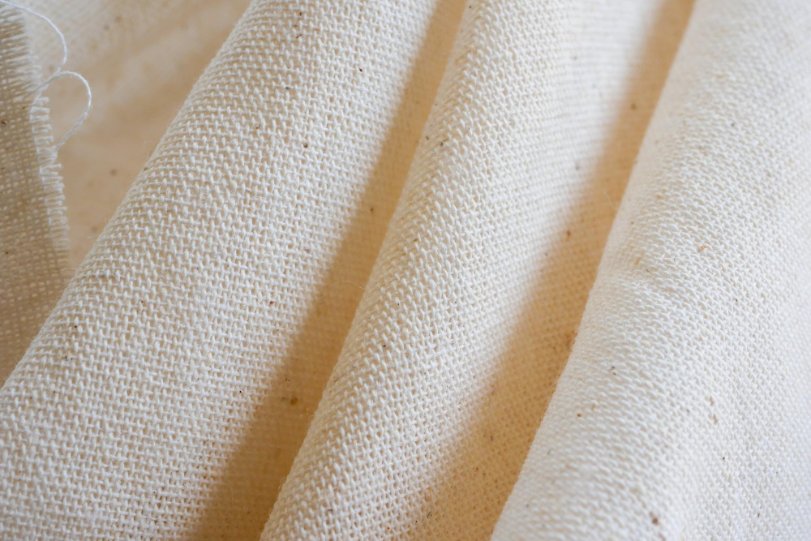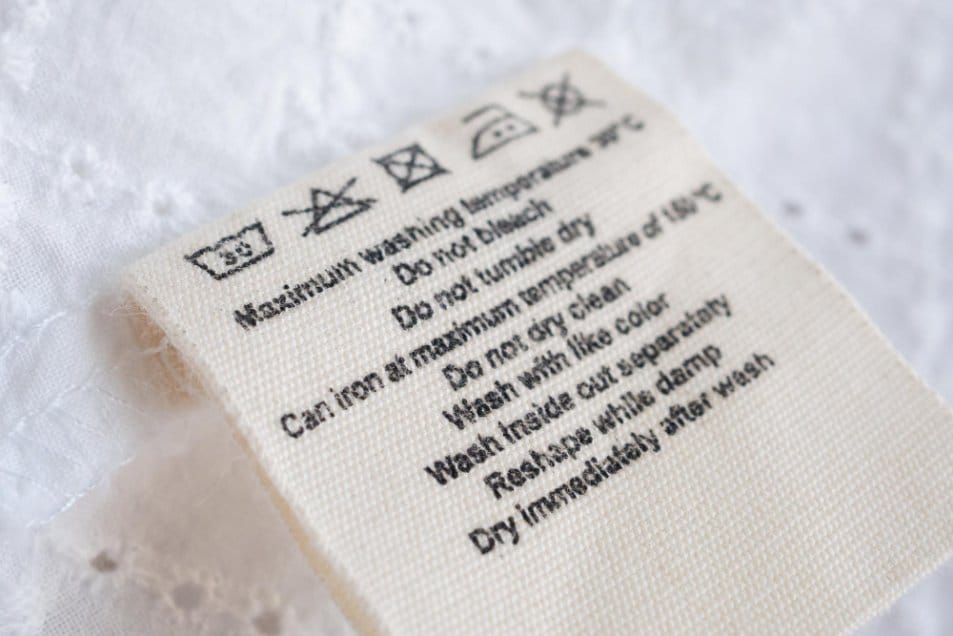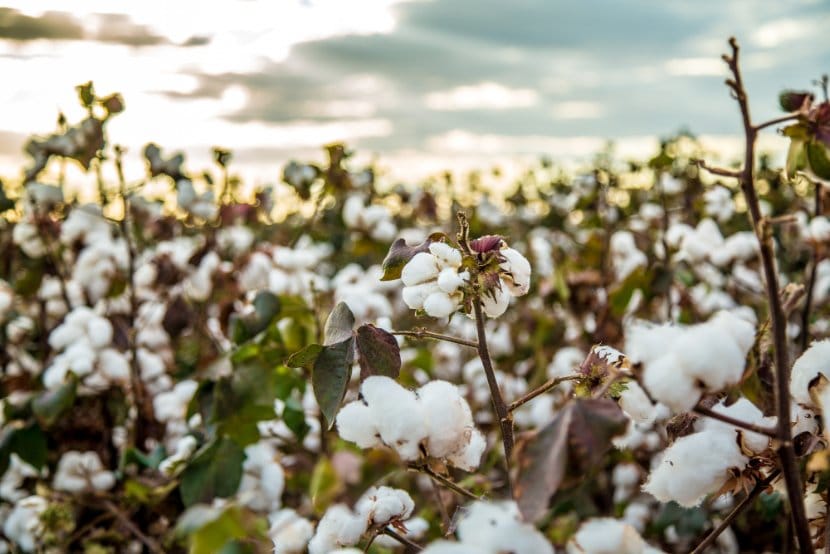Everything you need to know about choosing, using, and maintaining canvas cotton fabric for your creative projects
Table of Contents
- What is Canvas Cotton Fabric?
- Understanding Canvas Cotton Properties
- Canvas Weight Selection Guide
- Benefits and Creative Applications
- Step-by-Step Project Gallery
- Complete Care and Maintenance Guide
- Troubleshooting Common Problems
- Sustainability and Eco-Friendly Options
- Quality Suppliers and Pricing
- Frequently Asked Questions
- Conclusion
What is Canvas Cotton Fabric?
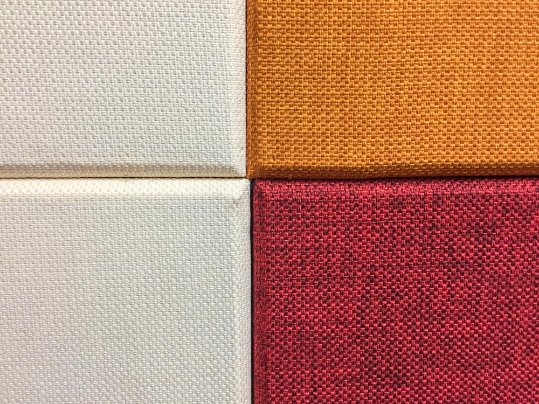
Canvas cotton fabric is a heavy-duty, plain-woven textile made primarily from cotton fibers. You’ll recognize it by its distinctive tight weave and substantial feel that makes it incredibly durable compared to regular cotton fabric. The word “canvas” actually comes from the Latin word “cannabis,” referring to hemp, which was the original material used for making canvas before cotton became the preferred choice.
Unlike lighter cotton fabrics such as cotton poplin or cotton lawn, canvas cotton has a much tighter weave that creates its characteristic strength and durability. This makes it fundamentally different from other cotton types you might be familiar with.
Key Difference: While all canvas cotton is made from cotton fibers, not all cotton fabrics are canvas. The difference lies in the weave structure, weight, and thread thickness that gives canvas its unique properties.
Canvas vs Regular Cotton: What Sets Them Apart
When you compare canvas to regular cotton, you’ll notice several important differences. Canvas cotton uses thicker yarns woven in a tight plain weave pattern, creating a fabric that’s significantly heavier and more durable. Regular cotton fabrics typically weigh between 3-6 ounces per square yard, while canvas cotton ranges from 7-20+ ounces per square yard.
The plain weave construction means each thread goes over one and under one in both directions, creating maximum contact between threads. This results in a fabric that resists tearing and maintains its shape even under stress. You can learn more about different cotton fabric properties and characteristics to better understand these differences.
Understanding Canvas Cotton Properties
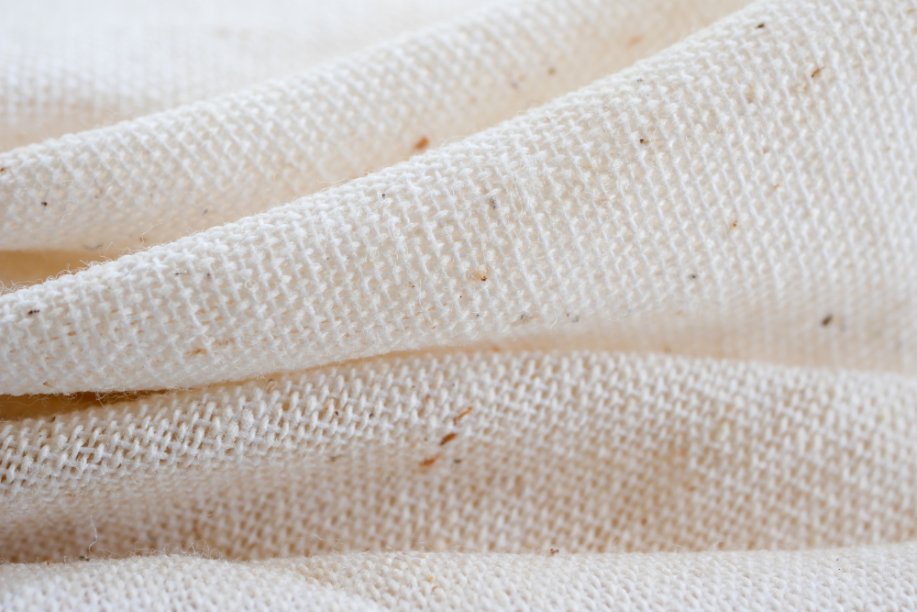
Canvas cotton stands apart from regular cotton fabrics through its construction and performance characteristics. While both share the same base fiber, the manufacturing approach creates vastly different end products with distinct uses and benefits.
Fabric Composition and Construction
Canvas cotton can be made from 100% cotton or cotton blends. The most common types you’ll encounter include:
- 100% Cotton Canvas: Offers maximum breathability and paint absorption, perfect for artistic applications
- Cotton-Polyester Blends: Adds strength and reduces shrinkage while maintaining most of cotton’s benefits
- Cotton-Linen Blends: Combines cotton’s workability with linen’s natural texture and strength
The construction method significantly affects performance. Single-fill canvas uses single-ply yarns throughout, while double-fill canvas incorporates double-ply yarns in the warp direction for extra strength. You’ll find that numbered duck canvas uses a specific numbering system where lower numbers indicate heavier, thicker fabric.
Canvas vs Other Cotton Types
Understanding how canvas cotton relates to other cotton fabrics helps you appreciate its unique qualities. Unlike lightweight options such as cotton lawn or medium-weight cotton poplin, canvas cotton uses much thicker yarns and tighter weaving. This creates a fundamentally different fabric that prioritizes durability over drape and softness.
Detailed comparison between cotton and linen canvas materials to help you choose the right option
| Canvas Type | Composition | Best Uses | Key Benefits |
|---|---|---|---|
| 100% Cotton | Pure cotton fibers | Art, crafts, bags | Breathable, absorbent, paintable |
| Cotton-Polyester | 80-85% cotton, 15-20% polyester | Outdoor gear, upholstery | Stronger, less shrinkage |
| Cotton-Linen | 60-70% cotton, 30-40% linen | High-end projects, artwork | Premium texture, durability |
Weight and Grades
Canvas weight is typically measured in ounces per square yard (oz/sq yd), and understanding this system helps you choose the right fabric for your project. The weight directly affects how the fabric behaves, its durability, and what applications it’s suitable for.
Canvas Cotton Facts You Should Know
- Canvas cotton has been used by artists since the Renaissance, replacing wooden panels
- The tight weave can have up to 140 threads per square inch in premium grades
- Cotton canvas naturally resists UV damage better than synthetic alternatives
- High-quality canvas cotton can last over 100 years with proper care
- The fabric gets softer with use while maintaining its structural integrity
Canvas Weight Selection Guide
Choosing the right canvas weight is crucial for your project’s success. Here’s a comprehensive breakdown to help you make the best decision:
Canvas Weight Selection Flowchart
Art, bags, upholstery, or outdoor gear?
Light use, moderate wear, or heavy-duty?
Heavier canvas costs more per yard
7-9oz (light), 10-12oz (medium), 13-20oz (heavy)
Lightweight Canvas (7-9 oz)
Best for: Lightweight bags, linings, light covers, small art pieces
Pros: Easy to work with, affordable, good drape
Cons: Less durable, may sag under weight
Price Range: $4.20-$8.00 per yard
Medium Canvas (10-12 oz)
Best for: Tote bags, medium art canvases, general covers, craft projects
Pros: Versatile, balanced durability and workability
Cons: Mid-range price point
Price Range: $8.00-$15.00 per yard
Heavy Canvas (13-16 oz)
Best for: Large paintings, heavy-duty bags, upholstery, outdoor equipment
Pros: Very durable, excellent structure, long-lasting
Cons: Harder to sew, more expensive
Price Range: $15.00-$25.00 per yard
Extra Heavy Canvas (18+ oz)
Best for: Industrial applications, tarps, marine covers, architectural projects
Pros: Maximum durability, weather resistant
Cons: Difficult to work with, highest cost
Price Range: $25.00+ per yard
Pro Tip: If you’re unsure between two weights, order samples first. The feel and drape can vary significantly between weights, and what works for one project might not suit another. Our Canvas Yardage Calculator can help you choose the perfect canvas weight for your specific project needs.
Benefits and Creative Applications
For Artists and Painters
Canvas cotton provides an ideal surface for various painting techniques. You’ll find that its natural texture grips paint well while allowing for smooth blending. The absorbent nature of cotton fibers helps paint adhere properly, and the tight weave prevents paint from bleeding through to the back.
Professional artists often prefer cotton canvas because it:
- Accepts both oil and acrylic paints beautifully
- Maintains color vibrancy over time
- Can be primed with gesso for different textures
- Handles multiple paint layers without deteriorating
- Stretches well over frames without losing tension
Artist’s Note: Unlike synthetic canvases, cotton canvas develops a pleasant patina over time and can be reworked multiple times. According to research published in the Fashion and Textiles journal, cotton canvas demonstrates exceptional tensile strength properties that make it ideal for long-term artistic applications.
DIY Projects and Crafts
Canvas cotton’s versatility extends far beyond painting. You can use it for countless easy sewing projects that require durable fabric. Its strength makes it perfect for items that need to withstand regular use and washing.
The fabric works excellently for:
- Heavy-duty tote bags and shopping bags
- Aprons and protective clothing
- Cushion covers and upholstery
- Wall hangings and banners
- Storage bins and organizers
- Outdoor cushions and furniture covers
If you’re new to sewing with canvas cotton, our Fabric Selector Tool can help you choose the perfect canvas type for your specific project needs and skill level.
Learn professional techniques for working with canvas fabric in this comprehensive sewing tutorial
Step-by-Step Project Gallery
Ready to put your canvas cotton to work? Here are detailed guides for popular projects that showcase the fabric’s versatility. Before starting any project, consider using our Project Difficulty Assessment to ensure you choose projects that match your current skill level.
Heavy-Duty Tote Bag
Beginner
Time: 2-3 hours | Canvas Weight: 10-12 oz
Materials:
- 1 yard canvas cotton fabric
- Heavy-duty thread
- Interfacing (optional)
- Basic sewing supplies
Steps:
- Cut two 15″ x 17″ rectangles for the bag body
- Cut two 3″ x 22″ strips for handles
- Sew handles by folding lengthwise, stitching, and turning
- Pin handles to bag pieces, ensuring even placement
- Sew bag pieces together with 1/2″ seam allowance
- Reinforce stress points with additional stitching
- Turn right side out and press seams
Tips: Use a heavy-duty needle and consider double-stitching stress points for longevity.
Canvas Art Panel
Intermediate
Time: 1-2 hours | Canvas Weight: 8-10 oz
Materials:
- Canvas cotton fabric
- Wooden frame or stretcher bars
- Canvas pliers or stretching tool
- Staple gun and staples
- Gesso (optional primer)
Steps:
- Cut canvas 4 inches larger than frame on all sides
- Place frame face-down on canvas back
- Start stretching from center of one side
- Work opposite sides, maintaining even tension
- Staple corners neatly, folding like gift wrap
- Check for even tension across entire surface
- Prime with gesso if desired
Tips: Work in a cross pattern when stretching to maintain even tension and prevent warping.
Kitchen Apron
Beginner
Time: 2 hours | Canvas Weight: 10 oz
Materials:
- 3/4 yard canvas cotton
- Bias tape for ties
- Thread matching fabric
- Pattern or template
Steps:
- Cut apron body using your preferred pattern
- Hem all edges with 1/4″ double-fold hem
- Add pocket if desired
- Attach neck strap with bias tape
- Add waist ties at appropriate positions
- Reinforce all stress points
- Press thoroughly for professional finish
Tips: Canvas cotton gets softer with washing, making it increasingly comfortable to wear.
Storage Basket
Advanced
Time: 3-4 hours | Canvas Weight: 12-14 oz
Materials:
- 1 yard heavy canvas cotton
- Interfacing for structure
- Cardboard base (optional)
- Heavy-duty thread
Steps:
- Cut base circle and side rectangle
- Apply interfacing to all pieces
- Sew side seam to form cylinder
- Pin and sew base to cylinder
- Create casing for drawstring (optional)
- Turn right side out
- Add cardboard base for extra structure
Tips: Heavy canvas requires a strong machine needle and slower stitching speed for best results.
Complete Care and Maintenance Guide
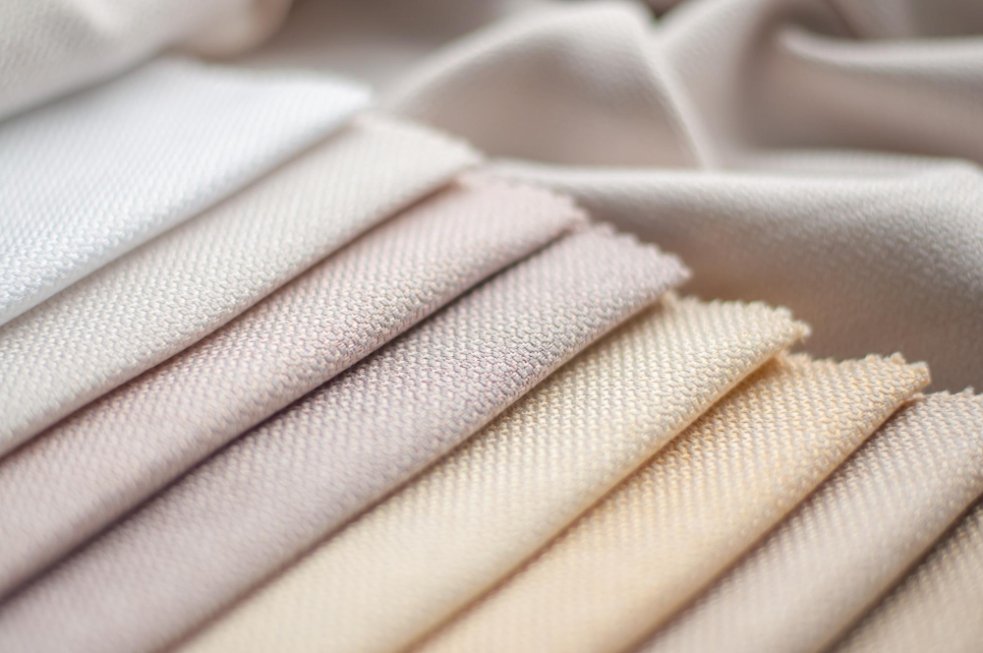
Proper care extends your canvas cotton’s lifespan significantly. With the right approach, your canvas projects can last for decades while maintaining their appearance and functionality.
Washing Guidelines
Canvas cotton is generally machine washable, but the approach depends on the specific project and any treatments applied. Here’s how to wash canvas cotton safely:
Pre-Washing Tip: Always pre-wash untreated canvas cotton before using it for projects to prevent shrinkage and remove any sizing chemicals that might affect paint adhesion.
Machine Washing Steps
- Check care labels: Some treated canvas may have specific requirements
- Use cold water: Prevents shrinkage and color fading
- Select gentle cycle: Reduces stress on fibers and seams
- Use mild detergent: Avoid bleach and harsh chemicals
- Don’t overload: Allow space for proper water circulation
- Turn inside out: Protects outer surface from abrasion
Hand Washing Method
For delicate items or painted canvases, hand washing provides more control:
- Fill basin with cold water and mild detergent
- Submerge item and gently agitate for 5-10 minutes
- Focus on stained areas with soft brush
- Rinse thoroughly with clean cold water
- Gently squeeze out excess water (don’t wring)
- Lay flat or hang to dry away from direct sunlight
Drying Best Practices
Important: Never use high heat when drying canvas cotton. High temperatures can cause significant shrinkage and may damage painted or printed surfaces.
For best results when drying:
- Air dry when possible: Hang or lay flat for best shape retention
- Use low heat if machine drying: Remove while slightly damp to prevent over-drying
- Avoid direct sunlight: Can cause fading and fiber degradation
- Reshape while damp: Smooth out wrinkles and maintain original shape
Stain Removal Techniques
Canvas cotton’s tight weave can make stain removal challenging, but with the right approach, most stains can be successfully treated:
| Stain Type | Treatment Method | Materials Needed | Success Rate |
|---|---|---|---|
| Oil-based paint | Scrape excess, treat with mineral spirits | Plastic scraper, mineral spirits, absorbent cloths | High (if fresh) |
| Acrylic paint | Remove while wet with soap and water | Mild soap, warm water, soft brush | Very High (wet), Low (dry) |
| Grease/oil | Blot excess, apply cornstarch, brush off, wash with degreasing soap | Cornstarch, degreasing dish soap, soft brush | High |
| Mud/dirt | Let dry completely, brush off, spot clean remainder | Stiff brush, mild detergent solution | Very High |
| Blood | Rinse with cold water immediately, use enzyme cleaner | Cold water, enzyme-based detergent | High (if fresh) |
| Food stains | Scrape excess, pre-treat with enzyme cleaner | Enzyme cleaner, soft brush, cold water | Moderate to High |
Emergency Stain Treatment
For fresh stains, quick action dramatically improves your success rate:
- Act immediately: The longer a stain sits, the harder it becomes to remove
- Blot, don’t rub: Rubbing pushes the stain deeper into fibers
- Work from outside in: Prevents the stain from spreading
- Test cleaning solutions: Always test on a hidden area first
- Rinse thoroughly: Remove all cleaning residue to prevent attracting dirt
For comprehensive stain identification and treatment, use our Interactive Stain Removal Guide for step-by-step troubleshooting specific to canvas cotton fabrics.
Storage Best Practices
Proper storage prevents mold, mildew, and fabric degradation. Here’s how to store your canvas cotton items safely:
Short-term Storage (1-6 months)
- Clean thoroughly: Remove all stains and dirt before storing
- Ensure complete dryness: Any moisture can lead to mold growth
- Use breathable containers: Avoid plastic bags that trap moisture
- Add moisture absorbers: Silica gel packets help maintain dry conditions
- Store in cool, dry place: Avoid basements, attics, or areas with temperature fluctuations
For comprehensive fabric care guidance, check our Fabric Care Generator which provides custom care instructions based on your specific canvas type and project.
Long-term Storage (6+ months)
For long-term storage, additional precautions are necessary:
- Fold minimally: Rolling is better than folding for preventing permanent creases
- Use acid-free tissue: Place between folds to prevent fabric-on-fabric contact
- Check periodically: Inspect stored items every 6 months for signs of problems
- Maintain stable environment: Ideal conditions are 65-70°F with 45-55% humidity
For seasonal storage planning, our Seasonal Fabric Care Calendar provides monthly maintenance reminders to keep your canvas items in optimal condition.
Storage Warning: Never store canvas cotton in plastic bags or airtight containers. The natural fibers need to breathe, and trapped moisture will cause mold and mildew growth.
Troubleshooting Common Problems
Even with proper care, you might encounter issues with your canvas cotton projects. Here are solutions to the most common problems:
Canvas Damage Repair
Fixing Creases and Dents
Cotton canvas has memory, meaning it can often return to its original shape with the right treatment:
- Lightly dampen the affected area: Use a clean brush or your fingers dipped in water
- Work the moisture into the canvas: The cotton fibers will absorb the water and begin to relax
- Gently work the crease: Use your fingers to smooth out the dent or crease
- Allow to dry naturally: As the fibers dry, they should contract back to their original position
- Repeat if necessary: Stubborn creases may require multiple treatments
Pro Tip: For painted canvases, you can often paint the back of the canvas in the problem area with matching colors to help disguise persistent creases or dents.
Addressing Sagging Canvas
If your stretched canvas becomes loose over time:
- Use corner keys: Many frames have expandable corners that can tighten the canvas
- Re-stretch if necessary: Remove staples and re-stretch with proper tension
- Consider fabric stiffener: Products like GAC 400 can help restore structure
- Check environmental factors: Humidity changes often cause sagging
Paint Adhesion Issues
If paint isn’t adhering properly to your canvas cotton:
- Remove sizing residue: Wash new canvas to remove manufacturing chemicals
- Apply proper primer: Use acrylic gesso for water-based paints, appropriate primer for oils
- Check paint quality: Old or separated paint may not adhere properly
- Consider fabric preparation: Some canvases benefit from light sanding to improve tooth
Shrinkage Prevention and Solutions
Canvas cotton will shrink if exposed to heat and moisture. To minimize shrinkage:
Prevention Methods
- Pre-wash all fabric: Always pre-wash canvas before cutting and sewing
- Use cold water: Hot water causes more shrinkage than cold
- Air dry when possible: Heat from dryers causes additional shrinkage
- Consider pre-shrunk options: Some suppliers offer pre-treated canvas
If Shrinkage Occurs
If your canvas item has already shrunk:
- Dampen the item: Use cool water to moisten the fabric
- Gently stretch while damp: Work the fabric back to approximate original size
- Pin or weight in position: Hold the stretched shape while drying
- Accept limitations: Some shrinkage may be permanent
Sustainability and Eco-Friendly Options
As environmental consciousness grows, you might want to choose canvas cotton options that align with sustainable practices. Understanding your choices helps you make informed decisions that benefit both your projects and the planet.
Organic vs Conventional Canvas Cotton
Organic cotton canvas offers several environmental advantages over conventional cotton:
| Aspect | Organic Cotton Canvas | Conventional Cotton Canvas |
|---|---|---|
| Pesticide use | No synthetic pesticides or fertilizers | Heavy pesticide and fertilizer use |
| Water usage | Often rain-fed, more efficient | Typically requires irrigation |
| Soil health | Maintains soil biodiversity | Can deplete soil nutrients |
| Price premium | 15-25% higher cost | Standard pricing |
| Certifications | GOTS, OCS available | Limited certifications |
Certifications to Look For
When choosing sustainable canvas cotton, look for these certifications:
- GOTS (Global Organic Textile Standard): Ensures organic fiber content and environmental criteria
- OCS (Organic Content Standard): Verifies organic material content in final product
- OEKO-TEX Standard 100: Tests for harmful substances
- Cradle to Cradle: Assesses entire product lifecycle
Sustainable Practices for Canvas Users
You can reduce your environmental impact through mindful practices:
- Buy quality over quantity: Invest in durable canvas that lasts longer
- Use every scrap: Save remnants for smaller projects or repairs
- Care properly: Extend fabric life through proper maintenance
- Repurpose old items: Transform worn canvas into new projects
- Support local suppliers: Reduce transportation environmental impact
Environmental Impact: According to textile industry research from Italian Artisan’s fabric analysis, cotton production uses significant water resources, but cotton canvas’s exceptional durability means fewer replacements over time. A well-made canvas tote bag can replace hundreds of disposable bags over its lifetime, making it an environmentally responsible choice despite initial resource investment.
Quality Suppliers and Pricing
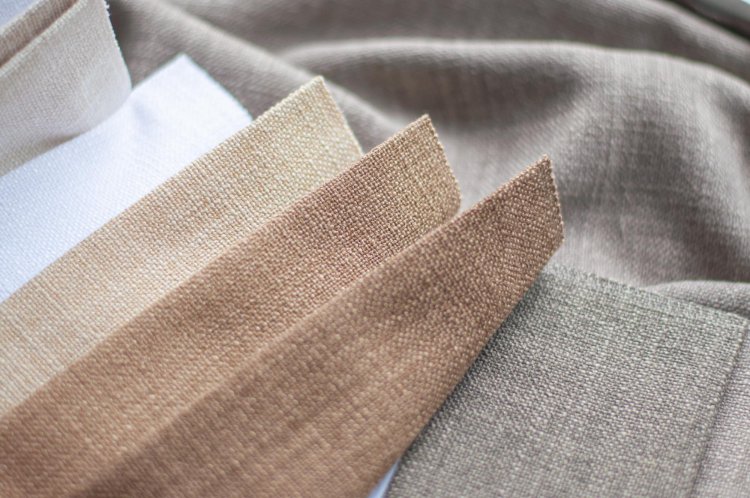
Finding reliable suppliers ensures you get quality canvas cotton at fair prices. Here’s what to look for and expect:
Choosing Quality Suppliers
When evaluating canvas cotton suppliers, consider these factors:
- Fabric specifications: Clear information about weight, composition, and weave
- Sample availability: Ability to order small samples before bulk purchases
- Consistent quality: Reliable batch-to-batch consistency
- Customer service: Responsive support for questions and issues
- Shipping options: Reasonable rates and delivery times
- Return policy: Fair return policy for defective or incorrect orders
Finding the right supplier can be overwhelming with so many options available. Our Canvas Fabric Supplier Finder helps you locate reliable suppliers in your area or nationwide based on your specific needs and priorities.
Understanding Canvas Cotton Pricing
Canvas cotton prices vary significantly based on several factors. As noted by Sewport’s comprehensive textile guide, canvas fabric typically ranges from budget-friendly options to premium specialty grades depending on weight, fiber quality, and treatments applied.
| Fabric Weight | Price Range per Yard | Best Value Options | Premium Options |
|---|---|---|---|
| 7-9 oz | $4.20 – $12.00 | Basic cotton duck | Organic or specialty blends |
| 10-12 oz | $8.00 – $18.00 | Standard artist canvas | Pre-primed, organic options |
| 13-16 oz | $15.00 – $28.00 | Industrial grade canvas | Specialty weaves, organic |
| 18+ oz | $25.00 – $45.00 | Heavy-duty applications | Marine grade, specialty treatments |
Money-Saving Tips
Get the best value for your canvas cotton purchases:
- Buy in bulk: Many suppliers offer discounts for larger quantities
- Watch for sales: End-of-season and clearance sales can offer significant savings
- Join loyalty programs: Frequent buyer programs often provide discounts
- Compare shipping costs: Factor shipping into total cost when comparing suppliers
- Consider mill ends: Shorter lengths at reduced prices for smaller projects
Budget Planning: For project planning, budget approximately 10-15% extra fabric beyond your calculated needs to account for mistakes, pattern matching, or future repairs. Use our Canvas Yardage Calculator to determine exact requirements for your projects.
Frequently Asked Questions
Yes, canvas cotton is significantly thicker than regular cotton fabrics. While standard cotton fabrics typically weigh 3-6 ounces per square yard, canvas cotton ranges from 7-20+ ounces per square yard. The thickness comes from using heavier yarns in a tight plain weave construction.
“Better” depends on your intended use. Canvas cotton excels in durability, structure, and longevity, making it superior for heavy-duty applications, art surfaces, and items that need to maintain their shape. Regular cotton is better for clothing and applications where drape, softness, and breathability are more important than durability.
Yes, cotton canvas can get wet and is generally machine washable. However, untreated canvas will absorb water readily. If you need water resistance, look for specially treated canvas or apply your own water-repellent coating. Always check specific care instructions, especially for painted or treated surfaces.
Cotton canvas is generally very safe, especially organic versions. It’s made from natural cotton fibers without harmful chemicals. However, some canvas may contain sizing chemicals or treatments, so pre-washing is recommended for items that will contact food or sensitive skin. Look for OEKO-TEX Standard 100 certification for guaranteed safety.
Canvas cotton’s main disadvantages include: higher cost than lighter fabrics, difficulty sewing due to thickness, potential shrinkage if not pre-treated, heavier weight than alternatives, and less drape than lighter fabrics. It can also be more challenging to work with for beginners due to its structure and weight.
Yes, 100% cotton canvas is naturally breathable due to the cotton fibers’ structure. However, it’s less breathable than lighter cotton fabrics due to its tight weave and heavier construction. Canvas cotton blends with synthetic fibers may have reduced breathability compared to pure cotton versions.
With proper care, high-quality cotton canvas can last 20-50 years or more. Artist canvases from centuries ago remain in excellent condition today. Factors affecting longevity include fabric quality, environmental conditions, usage patterns, and maintenance. Heavy-duty applications may see 10-20 years of service life.
Yes, cotton canvas naturally softens with use and washing while maintaining its structural integrity. This is one of the benefits of cotton fibers over synthetic alternatives. The fabric becomes more pliable and comfortable while retaining its durability and strength characteristics.
Cotton canvas can be eco-friendly, especially organic versions. While cotton production requires significant water and may use pesticides, canvas’s durability means fewer replacements over time. Choose organic, GOTS-certified options for the most environmentally responsible choice, and practice sustainable use habits.
Cotton canvas is also commonly known as “duck canvas” or “cotton duck.” The term “duck” comes from the Dutch word “doek” meaning cloth. Other names include canvas duck, heavy cotton, and depending on specific applications, it might be called sailcloth, tenting, or awning fabric. The numbering system (like #8 duck or #10 duck) is also widely used, where lower numbers indicate heavier weights.
Cotton canvas can wrinkle, especially lighter weights, but it’s generally less prone to wrinkling than lighter cotton fabrics due to its tight weave and heavier construction. When wrinkles do occur, they can usually be removed with steam or ironing on medium heat. The fabric’s natural stiffness helps it maintain its shape better than softer cotton materials like cotton lawn or cotton poplin.
New cotton canvas can feel somewhat rough initially, especially heavier weights and industrial grades. However, canvas becomes softer and more pliable with use and washing while maintaining its durability. The initial roughness varies by weight, with lighter canvas (7-10 oz) being noticeably softer than heavy-duty canvas (15+ oz). Duck canvas typically has a smoother hand than plain canvas.
Canvas cotton’s tight weave actually helps resist dirt and stains compared to looser weaves. While the natural cotton fibers can absorb soil, the dense construction prevents dirt from penetrating deeply. Many canvas items develop an attractive patina over time rather than just looking dirty. Regular maintenance and proper care keep canvas looking good for years. Use our Fabric Care Calculator to get personalized cleaning instructions for your specific canvas items.
Canvas cotton IS a type of cotton, but it’s significantly stronger than regular cotton fabrics. The strength comes from using thicker yarns in a tight plain weave construction, creating a fabric that can withstand much more stress and wear than standard cotton materials. Canvas cotton typically has 2-5 times the tensile strength of lightweight cotton fabrics.
No, not all canvas is made from cotton. While cotton canvas is the most common today, canvas can also be made from linen, hemp, or synthetic materials like polyester. Historically, hemp was the primary canvas material. Some modern canvas uses cotton-polyester blends or pure synthetic fibers for specific applications requiring extra durability or water resistance.
Canvas can be 100% cotton, but it’s not always pure cotton. Many canvas fabrics are cotton blends that include polyester (typically 10-20%) to reduce shrinkage and increase durability. You’ll also find canvas made from linen, hemp, or synthetic materials. Always check the fabric content label to know exactly what your canvas contains.
Cotton canvas provides moderate warmth due to its dense weave and natural cotton fibers, which have good insulating properties. However, it’s not as warm as wool or down materials. Canvas works well for spring and fall weather, and layered properly, it can be suitable for winter outerwear. The tight weave also provides good wind resistance, adding to its warming capabilities.
No, cotton canvas uses a plain weave construction, not a twill weave. In plain weave, each thread alternates over and under in both directions, creating maximum thread contact and strength. This differs from cotton twill, which has a diagonal pattern where threads pass over multiple threads before going under. The plain weave is what gives canvas its characteristic strength and stability.
Cotton canvas has moderate heat resistance compared to synthetic materials but is not inherently fire-resistant. It will burn when exposed to flame, though it doesn’t melt like synthetic fabrics. For fire-resistant applications, look for specially treated FR (fire-retardant) canvas cotton or consider fire-resistant fabric alternatives.
Cotton canvas has countless applications including artist canvases, heavy-duty tote bags, aprons, upholstery, outdoor furniture covers, tents, backpacks, shoes (like Converse), work clothing, drop cloths, banners, and storage containers. Its versatility makes it suitable for any project requiring durability, structure, and natural fiber benefits. To calculate exact fabric requirements for your specific project, try our Canvas Yardage Calculator.
Cotton canvas grades are typically designated by numbered duck system (#1-#12, where #1 is heaviest), ounce per square yard (7-20+ oz), or descriptive terms (lightweight, medium, heavy, extra-heavy). Industrial grades focus on durability, while artist grades emphasize surface quality and paint adhesion. Duck canvas has tighter weaves than plain canvas, and single-fill vs double-fill construction affects strength and handling.
No, canvas and linen are different. Canvas refers to a weave construction and weight category that can be made from cotton, linen, or other fibers. Linen refers specifically to fabric made from flax plant fibers. You can have linen canvas (heavy linen fabric) or cotton canvas (heavy cotton fabric). Linen canvas tends to be stronger and more expensive than cotton canvas, with a distinctive natural texture.
“Best” depends on your needs. Cotton canvas excels in breathability, paint adhesion, natural feel, and eco-friendliness. Polyester offers superior water resistance, fade resistance, and lower cost. For art projects, natural canvas is typically better. For outdoor gear exposed to weather, polyester canvas or cotton-polyester blends often perform better. Compare materials using our cotton vs polyester guide.
Conclusion
Canvas cotton fabric stands out as one of the most versatile and durable natural textiles available today. Throughout this guide, you’ve learned that its unique combination of strength, breathability, and workability makes it an excellent choice for countless applications, from artistic endeavors to practical everyday items.
Key Takeaways
The most important points to remember about canvas cotton:
- Weight matters significantly: Choose 7-9 oz for lightweight applications, 10-12 oz for general use, and 13+ oz for heavy-duty projects
- Pre-washing is essential: Always pre-wash untreated canvas to prevent shrinkage and remove sizing chemicals
- Quality varies widely: Invest in higher-grade canvas for projects that need to last decades
- Proper care extends life dramatically: Use cold water, gentle cycles, and air drying when possible
- Organic options offer environmental benefits: Consider GOTS-certified canvas for eco-conscious projects
Our Top Recommendations
Based on current market analysis and user feedback:
For Artists: Choose 8-10 oz 100% cotton canvas with tight, even weave. Pre-prime with quality gesso for best paint adhesion and longevity.
For DIY Projects: 10-12 oz canvas cotton provides the best balance of workability and durability for most sewing projects. Consider poly-cotton blends for items that need frequent washing.
For Heavy-Duty Applications: 15+ oz canvas cotton with tight weave construction. Look for double-fill options for maximum strength at stress points.
For Eco-Conscious Users: Organic cotton canvas with GOTS certification. While more expensive initially, the environmental benefits and often superior quality justify the investment.
Looking Forward
Canvas cotton fabric continues evolving with new treatments and manufacturing techniques improving performance while maintaining its fundamental benefits. As sustainability becomes increasingly important, expect to see more organic and recycled options entering the market.
Whether you’re starting your first canvas project or expanding your creative horizons, this durable fabric will serve you well for years to come. Remember that like any quality material, canvas cotton rewards proper selection, care, and respect for its characteristics.
Take time to test different weights and suppliers to find what works best for your specific needs. The initial investment in quality canvas cotton pays dividends through improved project outcomes and longer-lasting results.
Ready to start your canvas cotton journey? Use our helpful tools to plan your projects: calculate exact fabric yardage requirements, assess your project difficulty level, and find quality suppliers in your area.

